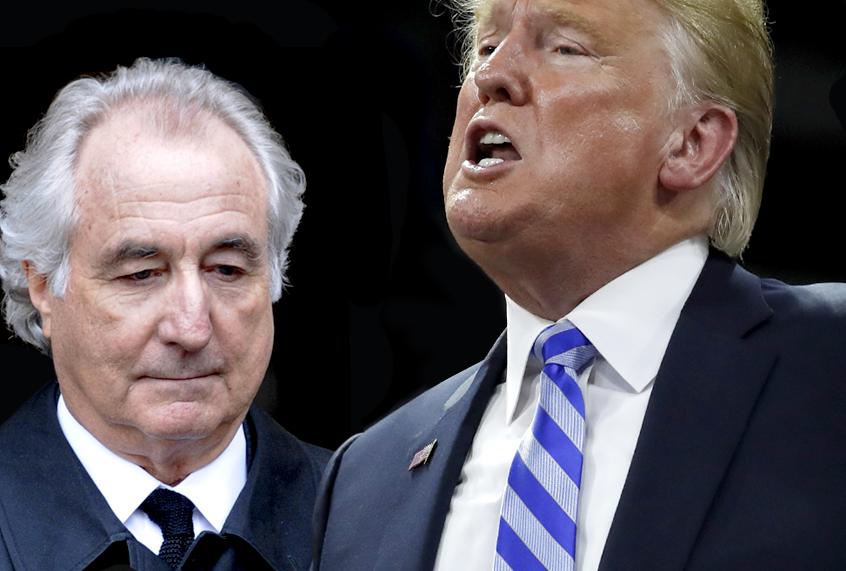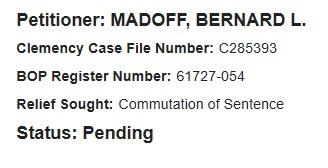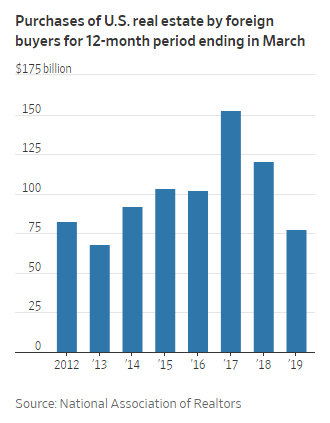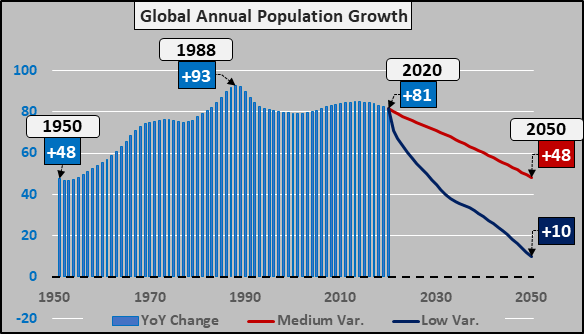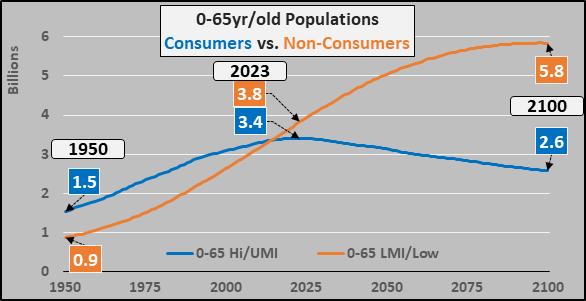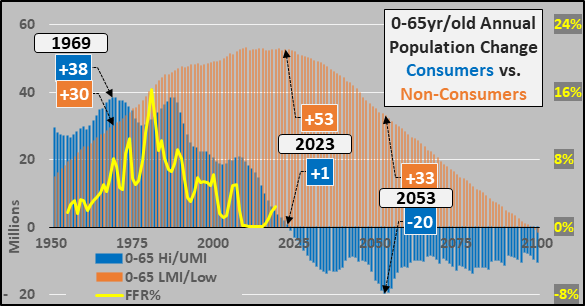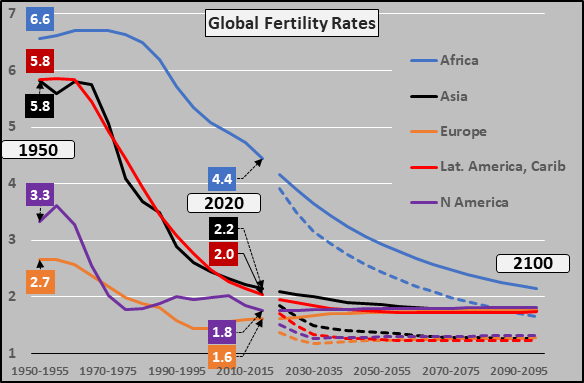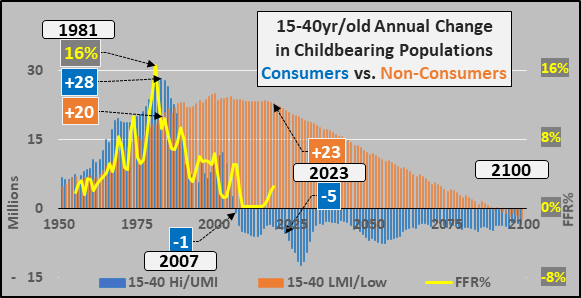Central bankers have two key roles: the first, and more trivial one, is to set the price of money by adjusting short-term interest rates, something they have been doing since the advent of central banking; the second and far more important role (especially in recent asset bubble-bust history) is to preserve the public’s confidence in a financial system that is effectively a ponzi scheme, reliant on both the constant creation of money in the form of new debt and society’s willingness to spend and not save said money, by propping up asset prices or vowing to do everything in their power to avoid another Lehman-type financial catastrophe. Here one need only recall the immortal warning of Mario Draghi to support the artificial European currency at its moments of greatest despair, “whatever it takes.”
It is this second key role that also has forced central bankers to attain an aura of infallibility: after all, if central bankers admit they don’t know what they are doing, how can they convince others that “all shall be well.” Here, too, one can recall Mario Draghi’s vows – which we now know were lies – that the ECB “does not have a Plan B” in case Greece exits the Eurozone, as the mere contemplation of such a worst-case scenario would create the self-fulfilling reality that central bankers are trying to avoid. Another such example is Ben Bernanke’s iconic prediction from 2007 that “subprime is contained.” Everyone remembers what happened next.
Yet, for all their theatrical bluster and premeditated arrogance, behind the scenes central bankers – just as clueless as everyone else about the two most complex non-linear systems in the world, the economy and capital markets – are actively engaged in contemplating precisely what the “worst case” consequence – the blind spot of their actions so to speak – is and may be.
It may come as a surprise to some that at the Federal Reserve, there is not only a person, but an entire team, whose job it is to predict and anticipate just how Fed policy can go terribly, horribly wrong.
Meet Margaret McConnell: she is the person who, as Bloomberg puts it in its profile piece, “often tells Federal Reserve officials that they should be a lot more confused than they let on.” McConnell is the head of the Applied Critical Thinking unit, “a little-known enclave of the New York Fed with a big mandate: to poke holes in the most basic assumptions that central bankers make — which can lead to big policy mistakes when they’re wrong.”
In other words, McConnell, and the ACT group, engage in what outside of the Fed would be called tinfoil hat conspiracy theories – anticipating the ways that the Fed’s shotgun approach to solving problems, which these days boils down to just one thing – cutting rates and printing money – will lead to new and never before seen complications, crises, and catastrophes, an outcome far worse than the global financial crisis.

Of course, describing the ACT in such a way would legitimize the countless financial outlets who spend each and every day anticipating all the ways in which the Fed’s relentless blowing of bubbles could devastate the global economy and in the process also eviscerate the public’s confidence in the Fed’s infallibility, so the group’s existence has to be kept as much under wraps as possible. Which is precisely what happened, for years in fact, until Bloomberg proceeded to profile McConnell and her group of “worriers.”
Here is how Bloomberg describes the functions of the ACT:
The ACT is there to remind the rest of the institution, whose vast research teams are under constant pressure to supply answers, that doubt is legitimate in the face of complex questions –- while it’s often the things we’re certain about that blow us up. The biggest risks aren’t always out there in the markets, in other words: Sometimes, they’re right inside the building.
In short, the ACT is designed to conceive, identify and hunt black swans before they appear, and complicating matters, neutralizing these swans even though most of them happen to be born either in the Marriner Eccles building or Liberty 33.
“I’m interested in shifting the lens,” McConnell – who as Bloomberg notes, “rarely appears in public or discusses details of the ACT’s sensitive work”, for obvious reason, said in an interview last month.
“What if what we’re talking about as true, is not true? Looking more for puzzles than for the story you think you know, that’s very hard to do.”
Indeed, this is a “deliberately unsettling approach, one that matches the mood on the world’s financial markets.”
One can argue that this group should have urgently been present at the Fed well over a decade ago when the central bank’s apparatchiks were blowing the biggest asset bubble to date, oblivious of its consequences. On the other hand, perhaps like any other dutiful servant, the ACT group would have simply kept its mouth shut afraid of revealing to its superiors just how wrong they were. Perhaps nothing would have been different.
There is no way to know.
One thing that is certain, however, is that if one fast forwards to today from Bernanke’s “subprime is contained” quote, a time when virtually all asset classes trade at record highs, the prevailing sense among the markets – if not central banks talking heads – is that “something big could be wrong.” To be sure, investors scrub every data point and scour the horizon in search of the next time-bomb – whether it’s corporate bonds, leveraged loans, gating investment funds, or the unprecedented pile of $13 trillion in negative-yielding debt.
Here McConnell steps in: she is expected to cast an even wider net, capturing the policy process itself.
The question, of course, is whether such an acute introspection is even possible: after all, as Bloomberg notes, the financial crisis offers plenty of illustrations of the Fed’s countless mistakes: “the Fed got housing markets wrong before the crash, and its estimates of labor resources in the recovery have been off, too.”
While we will never know what McConnell would have recommended to be done differently just ahead of the global financial crisis – her team has only existed for 3 years – her conclusion after 2008 was that economics as practiced at today’s central banks has embedded blind spots. “Her bosses agreed, and that’s how the ACT came to exist. “
To predict how the Fed may be wrong, McConnell envisioned a unit that would draw on fields such as psychology, complex systems theory and design, according to Bloomberg.
None other than former Goldman managing director and former NY Fed President Bill Dudley liked the idea, and McConnell launched it in 2016. There are now about 15 analysts working there. Dudley calls the crisis “a bitter failure of imagination.” Part of that failure happened inside an economics profession more inclined to celebrate its successes; another part is because the Fed refused to even acknowledge that it could be fallible.
Which brings up a concerning observation: if even the Fed is willing to develop an in-house “risk management” group – and not just any risk management but one targeting black swans – tasked with predicting what it is doing wrong, things must be far scarier than the Fed, which is clearly losing confidence in its infallibility, is letting on. However, that’s the topic for another day.
For now, let’s go back to McConnell, who is described as “the kind of person who gets worried when everyone else thinks the outlook is bright.”
She had a “flair for darkness,” Timothy Geithner, former Treasury secretary and Dudley’s predecessor as New York Fed chief, said in his crisis memoir “Stress Test.” That’s one reason why he chose her to be one of his closest aides.
“She would always ask the awkward question, the uncommon question,” Geithner told Bloomberg in an interview. “She was a famously curious person, and deeply skeptical about received wisdom.”
In that case, maybe once McConnell is let go by the Fed for being too truthful – or after Trump disbands the US central bank – she can seek employment on this blog.
Joking aside, as Bloomberg’s Craig Torres puts it, “the challenge for the Fed is how to harness that kind of contrarianism into an institution that’s intensely focused on mission-critical daily tasks.” And not only that, but an institution that is intensely allergic to even the merest of speculations that i) it may not know what it is doing and ii) what it is doing may have disastrous consequences.
Yet the presence of McConnell is evidence of both.
The Fed’s legions of PhD economists are toiling away with little spare time for discursive thought. They’re trying to spot the latest trends in trade, investment, prices or employment, so their bosses can make better policy.
The research process is rigorous and hierarchical, former staff members say, with no tolerance for error. They cite an internal saying: You’re not allowed to make the same mistake once.
Of course, the Fed makes mistakes, and when the Fed’s mistake finally makes it to the surface, the results are catastrophic. Look no further than the bursting of the credit/housing bubble of 2007.
The good news is that the Fed has always found enough firepower to create an even greater bubble with which to replace the existing one. Only this time, the bubble is so big it involves all central banks. In fact, as both the BIS and the IMF has been warning in recent months, if and when the current asset bubble bursts, central banks may not be able to recover; that would be the worst case scenario for capital markets – one where intervention by the money printers, even setting the cost of money deeply negative, fails to restore confidence in the system.
That may explain why the Fed is now close to panic in preventing yet another bubble bursting, and is so intent in pursuing “insurance” rate cuts to avoid the situation from getting out of control.
Perhaps that is also due to feedback from ACT. In any case, the Fed’s existing culture is what the ACT is trying to change, according to Dudley. “You can have a regime where people don’t take risks,” he says – but then you’ll miss things, maybe important ones. “You can be right in the small. But if you’re not right in the large, it can be a big mistake.”
Just ask Dick Fuld.
And here, another irony emerges: if the Fed is intent on retaining a truly independent, “outside the box” thinker, it failed miserably. For one, McConnell’s background is that of someone who would fit right in with the Fed’s central planning apparatchiks – after getting her PhD from Ohio State University, she joined the Fed’s domestic research team in 1996. A few years later, she began to take an interest in institutional biases, when she brushed up against them herself.
She co-wrote a paper about why the volatility of GDP growth was declining, and pursued a hunch that just-in-time inventory management had changed things. But inside the Fed, she was encouraged to put more emphasis on the central bank’s newfound ability to stabilize the economy.
It was a revealing instance of confirmation bias – the kind, McConnell would later point out, that blinded the Fed to cracks in the financial system before 2008.
“We have this tendency to want to congratulate ourselves,” she said in 2013, in a talk posted on YouTube. “There is a tendency to see a robust economic environment -– a boom –- as an indication of success in decision-making across all facets of the financial system. Until it is not.” Congrats Margaret, you just “discovered” the reflexivity of the interaction between the Fed, capital markets and the Economy.
But how does one approach an institution that is so profoundly seeped with a sense of its own self-importance and infallibility? According to Bloomberg, McConnell has experimented with different ways of getting colleagues to confront worst-case risks. The ACT sometimes runs war games, according to people who’ve taken part.
The scenario might be a bank that’s desperate for liquidity but lacks collateral in the U.S., or a Treasury default amid debt-ceiling brinksmanship.
In short, Lehman part 2.
The New York Fed’s former head of research, James McAndrews, recalled one exercise conducted just before an important policy decision. The ACT came up with some fictional news headlines from a year into the future, to illustrate potential outcomes. “It made us take one step back and think about the life-cycle of an issue,” McAndrews told Bloomberg. The takeaway: “Don’t push too hard along a single line of argument. Because it could be negated.”
Not satisfied with her conventional background, McConnell wants to apply insights from other fields “particularly intelligence, design, climate science and medicine” to central banking. One of these, behavioral psychology would be especially apt.
There are economists on her reading list, like Daniel Kahneman, the Nobel laureate who’s written about the differences between instinctive and logical thinking, and the biases inherent to each.
She’s also interested in the work of political scientist Philip Tetlock, the author of “Superforecasting,” and Alex Ryan, a pioneer in complex systems theory at the MaRS innovation hub in Toronto.
Not helping boost confidence in this secretive Fed experiment in crisis prevention, Ryan said one lesson from the study of systems is that large-scale collapses aren’t all that rare, and he noted that the ACT’s approach is also employed by armies – which, like other big institutions, are vulnerable to “organizational myths” that become entrenched, especially after successes.
Just like the Fed. Especially like the Fed. That’s also why there’s a so-called Red Team in war games, whose role is to probe and pressure the base case, he says.
In a financial scenario, it might be that policy makers can’t see any reason why a particular market should pose risks. “But Red Team will say: Let’s assume that actually this market does collapse, and we get exposed. Let’s figure out what are all the causes that would’ve led to that.” (Just venturing a guess here, but… not enough money printed?)
Sarcasm aside, whether McConnell is allowed to keep pushing boundaries will depend on whether Fed leaders believe such exercises are useful, or if they hit too close to home, i.e. reminding the Fed that it is absolutely clueless about the future, and that its only recourse is injecting more money and liquidity into the system. Which works… until one day the dollar is no longer the world’s reserve currency (an outcome which JPM warned yesterday is coming).
Making matters more complicated, central banks aren’t a natural home for contrarians, said Alberto Musalem, who oversaw the ACT as head of policy analysis at the New York Fed, before leaving to co-found Evince Asset Management. In that respect, they’re a bit different from the financial markets they oversee.
“The incentive structure in the market rewards people who are forward thinkers, lateral thinkers, and who gameplay scenarios,” he said. “At the Fed, the incentives aren’t necessarily these.”
He is right: in fact, at the Fed the only incentive is to be a yes man, and to rarely if ever express doubt doubt the path that the Fed is on. Which is why it is truly bizarre that – for now at least – McConnell has enthusiastic endorsements from the last three New York Fed presidents. That will change, however, the moment the ACT advises the Fed that it is on collision course with a crisis the likes of which have never been seen before. That’s when the Fed’s senior staff will quietly disband the ACT team and let McConnell go. Ironically, if she is half as smart as Geithner made her out to be, she will correctly anticipate that this will be the outcome of her actions, and she will prudently keep her mouth shut to avoid just this eventuality.
And speaking of Fed president, the current one – uberdove John Williams who last week made an unprecedented communications fiasco by telegraphing to the market that the Fed would cut 50 bps prompting the NY Fed to issue a statement disavowing his comments, and directly demonstrating just how clueless the Fed’s “smartest people in the room” really are – said in a July 12 interview that the ACT has helped to structure analysis and internal debate in new ways. Alas, not in ways that he appeared to internalize in any way.
Which is not to say McConnell’s team has has no impact: it clearly has changed the bureaucracy of the Fed: “He’s asked the unit to redesign the Fed’s economic briefings, where the traditional format has been to look at evidence and arrive at answers.”
“Meg and her team are good at telling us that perhaps that’s not a sign of success,” he said. “Sometimes the right answer is: ‘I don’t know.’ We need to keep that in mind.”
Sadly by the time it becomes abundantly clear to everyone that the Fed indeed “does not know” it will be too late.
via ZeroHedge News https://ift.tt/2K1U0DU Tyler Durden
